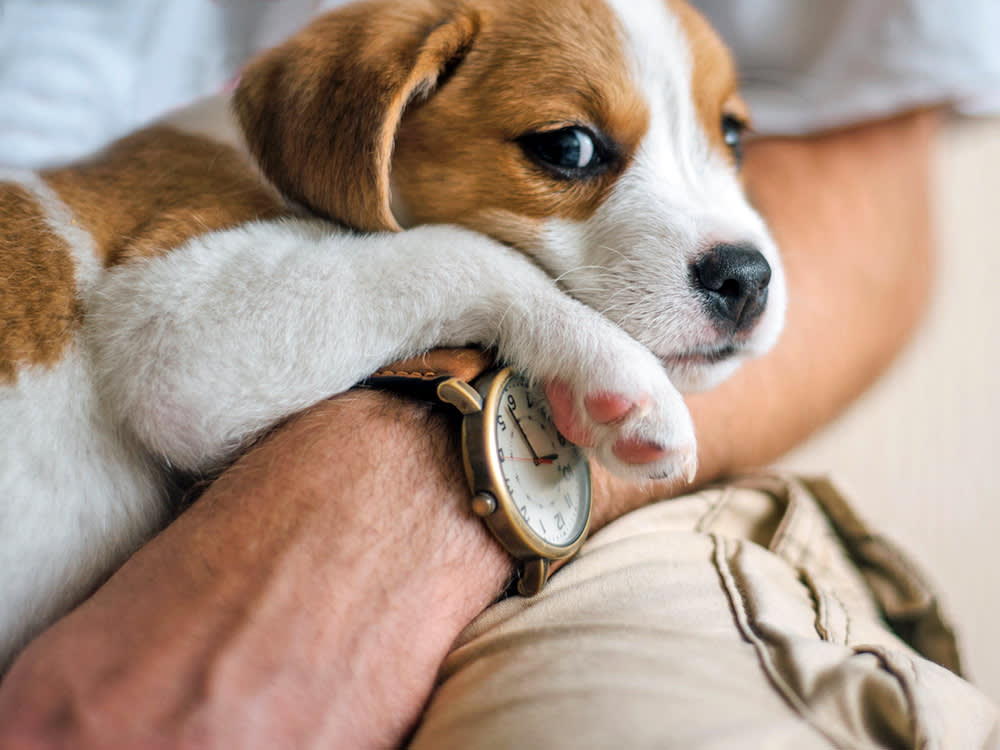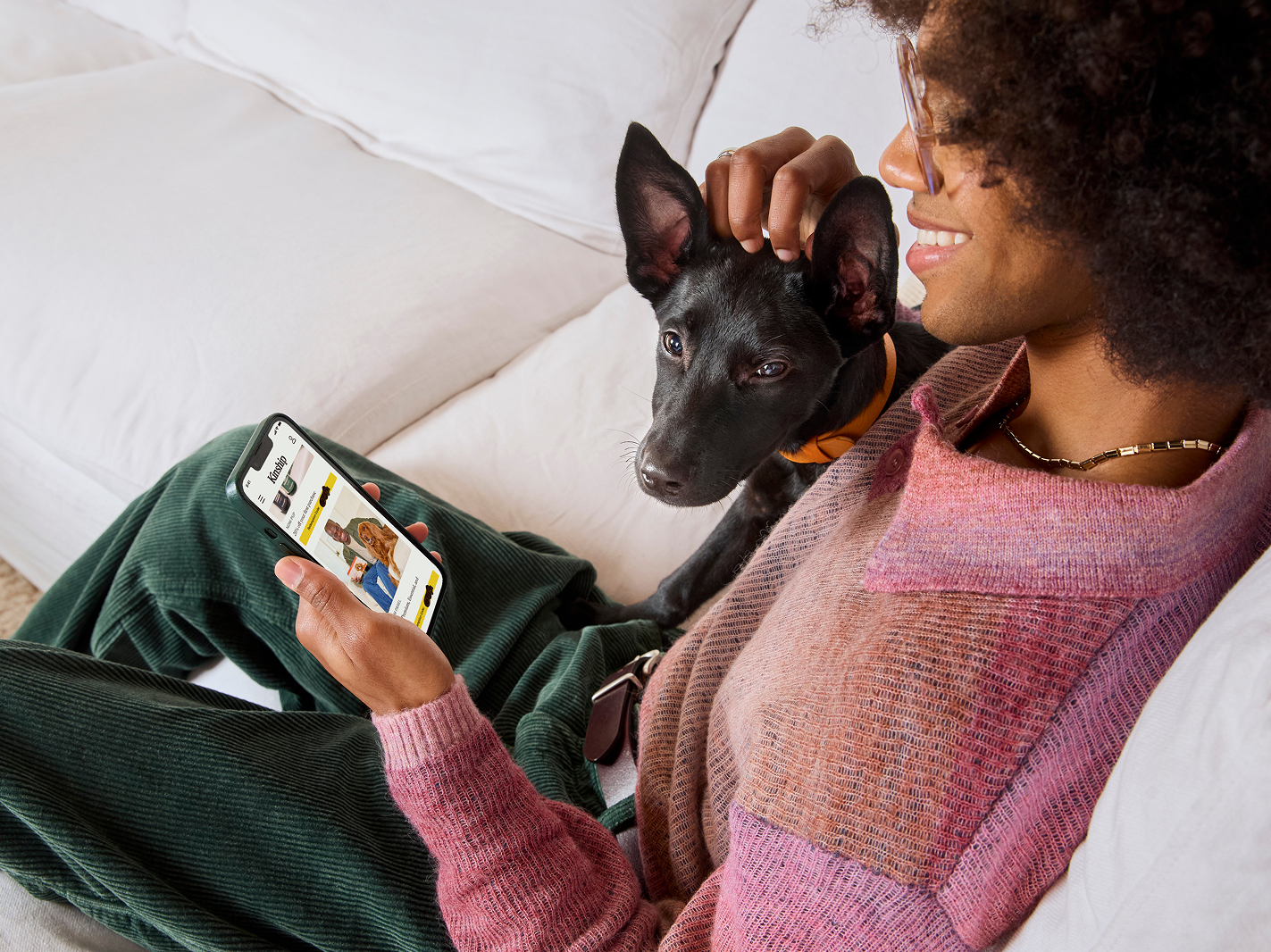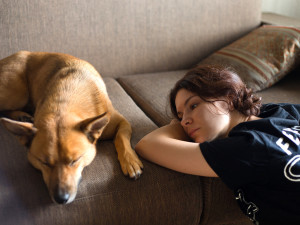How Do Dogs Know What Time It Is? Their Internal Clocks, Explained
They are never late for dinner.

Share Article
It’s 4:59 p.m. Your dog sits next to their food bowl, waiting, ears perked. They watch as you move about the kitchen. At 5:01 p.m., they impatiently paw their bowl.
Sound familiar?

Get (totally free) deals for food, treats, accessories, tech, and way more pet parenting must-haves.
opens in a new tabFor creatures who don’t wear watches, dogs sure seem to have an uncanny sense of when it’s time to eat, go for a walk, or go to bed.
But can dogs really tell time?
We spoke to Dr. Zachary Silver, director of Occidental College Canine Intelligence Lab, and Dr. Krista Macpherson, who studies comparative cognition and teaches at Western University in Ontario, Canada about how dogs perceive and understand time.
The short answer is: Yes, dogs probably do understand the passage of time in some sense. However, studying an intangible concept like whether dogs have a sense of time is quite difficult. Dogs, of course, also can’t verbalize what they’re experiencing. This leaves researchers to rely on observation and inference during trials.
“You have to make sure that the question you are asking is the same question that they are perceiving,” Macpherson adds. “That can be a really tricky thing.”
Despite the limited body of research around time perception in dogs, both experts we talked to say there are some things we do know and some things around which we can only make educated guesses. Here are a few factors that we think might impact how dogs understand time.
Biology probably plays a big role.
Circadian rhythms drive many biological processes, including eating and sleeping, in both humans and dogs. As a result, Silver says it’s not too hard to imagine that physiological signals, such as neurotransmitters or hormones, might signal to dogs when it’s time to eat.
In other words, when a dog’s stomach is empty, they likely get a signal from their body that they’re hungry; it’s time to eat. Another type of internal timing is called “interval timing,” which refers to perceiving a duration or period of time. Macpherson’s research has confirmed that dogs can track time in intervals, too.
She studied this in a lab by training dogs to hit a button, which would then cause a machine to spit out a treat. She then adjusted the button and machine, so that it wouldn’t spit out a treat until a full minute had passed, no matter how many times the dog hit the button.
“It’s really funny to watch, because [the dogs] all do different things,” Macpherson says. “Some are smashing at the machine. Others are looking at [their pet parent], like looking back at the machine, looking at [their pet parent], because all of a sudden this thing isn’t working right.”
Macpherson found that dogs would refrain from pressing the button when they knew they’d have to wait for a treat. Once it got closer to that one-minute mark, they’d start pressing the button more.
“It would almost be surprising if dogs couldn’t do this,” Macpherson says. “But with dogs, theres always also the extra question of, well, we have selectively bred them for thousands of years at this point, so maybe we’ve bred out some of these things that would be natural.”
Sensory inputs might play a factor, too.
Sometimes, dogs seem to know when something is going to happen that can’t easily be explained by biological processes. For example, some dogs might be waiting at the door when you arrive home from work every day, even if you arrive at different times.
“We know that dogs are able to use their sense of hearing, a sense of smell, in extremely sophisticated ways that, even in some cases, surpass our own understanding of how they use those senses,” Silver says.
In other words, he says, dogs may pick up on cues in their environments to predict when things should happen. For example, an increase in cars on the street might indicate people (including their own humans) are returning from work. Maybe dogs are paying attention to the position of the sun or certain scents.
Macpherson says when she was an undergrad, she had a dog who would hide in her room when she wasn’t home. About 30 seconds before she would return home every day, the dog would come downstairs. “I think possibly it's that my old, rickety car made a particular noise that she was sensitive to,” Macpherson says. “But that’s just an example of a cue that my dog was clearly tuned into.”
We may play a bigger factor than you’d think.
Our own daily routines, habits, and behaviors might also play a significant role in how our dogs perceive and understand time, Silver notes.
“We know that dogs learn patterns extremely well, and that’s why they’re so effective at learning routines because they’re able to track which event goes first and what should follow logically,” he says. “We primarily think about that routine as being something that’s centered around the dog’s schedule. But dog lives are, in many cases, centered around our own schedules as humans.“
In other words, our dogs might be taking notes on our behaviors and building up patterns and cues between different actions. For example, your dog might know it’s time for breakfast because they smell coffee brewing and know you’re in the kitchen. Or, they might know a walk is imminent if they hear you ask Siri for the temperature and lace up your shoes.
This also explains why dogs do well with routines. Silver says routines can provide dogs with a sense of comfort because they know that their needs (such as food and exercise) will be met at a consistent time every day. Interestingly, Silver says that some dogs seem more attentive than others, regardless of factors like breed. He hypothesizes that a dog who is much more keyed into their human’s behavior probably also has a stronger perception of time than a dog who pays less attention.
There’s still more to learn about dogs and time.
Both Silver and Macpherson emphasize that time is a complex concept: Most likely, dogs understand and perceive time through a mix of biological, sensory, and social factors all working together. But there’s simply still so much to learn about canine cognition and how they perceive the world.
So, the next time your dog is waiting near their food bowl: Maybe they’re hungry. Maybe they’ve noticed the sun going down. And maybe they’ve noticed that you’ve logged off your work computer. Either way, signs indicate it’s chow time.

Sarah Kollmorgen
Sarah is a writer whose work has appeared in The Atlantic, Discover magazine, and the Huffington Post, among other places. She lives outside of Denver with her husband and their dog Lucy, who is the true queen of the household.
Related articles
![Dark brown dog sitting on a gray couch in a living room]() opens in a new tab
opens in a new tabTurns Out Dogs Can Tell, Er, Smell Time
There’s no time like the present, according to your pet.
- opens in a new tab
How Long Can You Leave a Dog Alone?
Not that you want to be away from them anyway.
![Angry pomeranian chihuahua pup on a dark gray background]() opens in a new tab
opens in a new tabIs Your Dog Giving You the Stink Eye?
Despite plenty of reasons to get mad, an animal behaviorist says dogs rarely express real anger.
- opens in a new tab
Does My Dog Love Me? How to Interpret Canine Bonding Behavior
What to do when you don’t feel the close bond you want.
- opens in a new tab
Do Dogs and Cats Care What They Look Like?
They do seem to act different after a trip to the groomer, right?
![Woman and dog in lavender field.]() opens in a new tab
opens in a new tabDogs Have Favorite Scents, Study Says—And No, It’s Not Just the Smell of Food
So, go ahead and get that lavender-scented candle.







